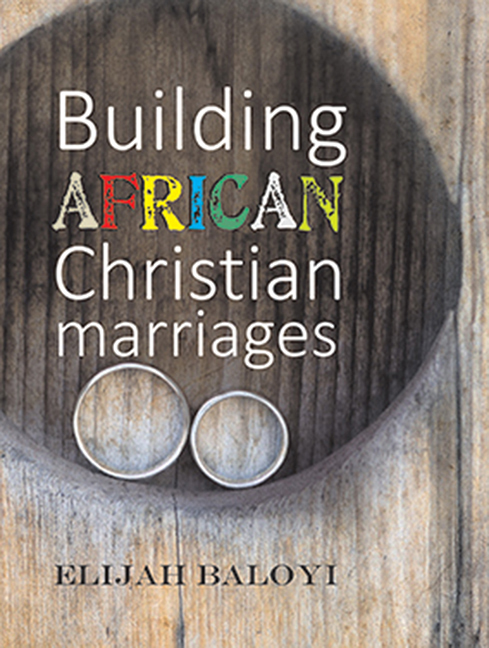Book contents
- Frontmatter
- Dedication
- Contents
- Foreword
- Preface
- Acknowledgements
- Chapter 1 Traditional obstacles in young African marriages
- Chapter 2 Excessive family intervention in African marriages
- Chapter 3 The influence of lobolo on the African marriage union
- Chapter 4 The negative influence of infertility on young African marriages
- Chapter 5 Some biblical teachings about marriage
- Chapter 6 Conclusion
- Appendix A comparison of the African and the biblical perspective on marriage
- References
- Index
Appendix - A comparison of the African and the biblical perspective on marriage
Published online by Cambridge University Press: 14 February 2020
- Frontmatter
- Dedication
- Contents
- Foreword
- Preface
- Acknowledgements
- Chapter 1 Traditional obstacles in young African marriages
- Chapter 2 Excessive family intervention in African marriages
- Chapter 3 The influence of lobolo on the African marriage union
- Chapter 4 The negative influence of infertility on young African marriages
- Chapter 5 Some biblical teachings about marriage
- Chapter 6 Conclusion
- Appendix A comparison of the African and the biblical perspective on marriage
- References
- Index
Summary
Introduction
Based on the previous chapters, the study aimed to show that there are some conflicting views regarding how the Bible and African culture perceive marriage; however there are no clear disparities where the issues of lobolo, excessive family intervention and infertility are concerned. Therefore, this chapter intends to show by means of a comparison the similarities and dissimilarities between the biblical and African traditional way of handling marital issues. This will, in turn, help strengthen the argument that it is possible to have a Christian marriage without abandoning the African traditional traits that were discussed. Although, certain terms such as dowry and lobolo have different meanings, it is understandable that they share a common intention: to have a bridal gift before marriage. The comparison will argue that the African perspective on marriage should not be wronged when viewed with a Biblical lens.
The detailed comparison below argues that a clear link or relationships exists between the biblical and African perspective of marriage under the discussed topics. The reader will see that most of the concepts are fundamentally similar, but differ only in application where misunderstandings and over-emphasis play a role.
The meaning of marriage
Similarities:
The concept ‘marriage ‘ exists in both the Shangaan culture and the biblical view; it refers to the union of two people of different sexes for life (Maswanganyi s.a:6, Gen. 2:24).
While the Bible emphasises the union of the two people, the Shangaan view extended this union to unite the two families instead of the two people getting married (Gen. 2:24). The Bible shows that the wife is a helper who should be treated with love, respect and care, but in the Shangaan view, a wife is inferior, subordinate, slave-like and like a piece of her husband's property.
The purpose of marriage
Similarities:
Both views accept that the husband and wife must live together and bear children of their own. They also both agree that the husband is the head of the family (Eph. 5:23).
There is a greater emphasis on childbearing amongst traditional Shangaans than in the Bible; for instance, childless marriages in the Shangaan culture have little chance of survival (Gen. 1:28; Kimathi 1994:12).
- Type
- Chapter
- Information
- Building African Christian Marriages , pp. 73 - 84Publisher: University of South AfricaPrint publication year: 2013



